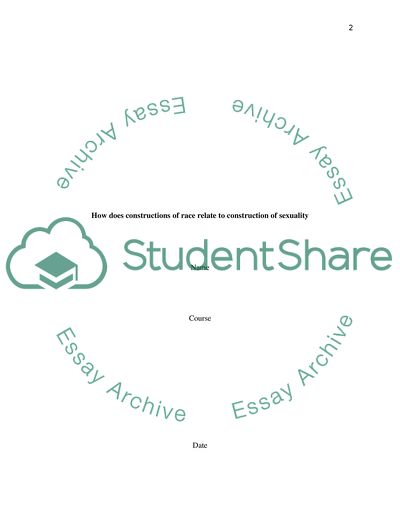Cite this document
(“How do constructions of race and/or ethnicity relate to constructions Essay”, n.d.)
Retrieved from https://studentshare.org/sociology/1639596-how-do-constructions-of-race-andor-ethnicity-relate-to-constructions-of-sexuality
Retrieved from https://studentshare.org/sociology/1639596-how-do-constructions-of-race-andor-ethnicity-relate-to-constructions-of-sexuality
(How Do Constructions of Race and/Or Ethnicity Relate to Constructions Essay)
https://studentshare.org/sociology/1639596-how-do-constructions-of-race-andor-ethnicity-relate-to-constructions-of-sexuality.
https://studentshare.org/sociology/1639596-how-do-constructions-of-race-andor-ethnicity-relate-to-constructions-of-sexuality.
“How Do Constructions of Race and/Or Ethnicity Relate to Constructions Essay”, n.d. https://studentshare.org/sociology/1639596-how-do-constructions-of-race-andor-ethnicity-relate-to-constructions-of-sexuality.


